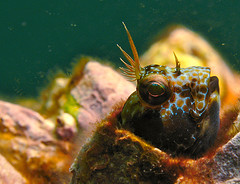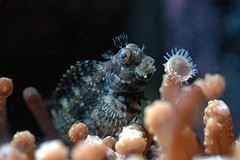There are tons of saltwater aquarium heaters available in the market for home aquariums.
Others, of course, are better. But the popular ones work off the same principles and also have parts in common.
A basic aquarium heater looks like a big test tube. It also has a wiring in it an electrical cord coming out of it.
The wiring is a heating coil in a glass tube that gets to go in your aquarium. This has to be turned on and off. You’ll be able to set the desired temperature using the thermostat.
Types of saltwater aquarium heaters:
Hanging Heater

They are usually called clamp-on, clip-on, or semi-submersible heaters. These are the old school style of heaters. They’ve been around since early 70’s.
Obviously, it is named as a hanging heater because you simply hang it on the upper part of your aquarium.
The extent to which part of the body goes underwater depends on the type of heater.
It will be submerged but the controls will remain out of the water.
They are inexpensive but I don’t recommend this to be the best choice.
Here are some of the disadvantages:
- The location on where you put it is not very efficient for heat exchange.
- The location is vulnerable to disturbance of either you or the inhabitant.
- There’s a high chance that it will be damage from where it is located.
- They tend to have less efficient thermostats for controlling their operation.
Since you’ve probably already invested a lot of money in setting up your aquarium, try not to jeopardize the success by saving a couple of dollars on an inexpensive heater.
No products found.
Submersible Heater
No products found.
This is the preferred choice for saltwater aquariums. It is also called an immersion heater.
See image link on the right (opens to a new window).
You can fully submerge it whichever location you want.
- You can put it all the way to the bottom where it will be out of the way of you when you do your routine cleaning.
- Out of the way of your inhabitants.
- Out of the view.
- In a more efficient location for heat dispersion.
- Even in the sump of your trickle filter keeping it completely out of the way.
Submersible saltwater aquarium heaters also have advanced thermostat controls, which make it easier to set the desired temperature.
No products found.
Now that you know of the two options, you now need to learn what features to look for when you purchase your saltwater aquarium heater. Click here to learn what they are.
Avoiding Hotspots

Place the heater close to an area where there is a circulation of water. This way, heated water will be evenly distributed in your aquarium.
This is usually close to your filter system.
Another advice is to try to fully submerge the heater at the bottom. This way, heat convection can be optimized.
Filter sump is another great location because water is always moving through it!
Return from Saltwater Aquarium Heaters to Saltwater Aquarium Temperature
* Disclaimer: Saltwater-Aquarium-Online-Guide.com is a participant in the Amazon Services LLC Associates Program, an affiliate advertising program designed to provide a means for sites to earn advertising fees by advertising and linking to amazon.com, amazon.co.uk, amazon.ca. Amazon and the Amazon logo are trademarks of Amazon.com, Inc. or its affiliates. We may receive a small commission if you click on one of our links and make a purchase. Thank you for supporting Saltwater-Aquarium-Online-Guide.com and helping me make it the best site possible!
Last update on 2024-03-18 / Affiliate links / Images from Amazon Product Advertising API
